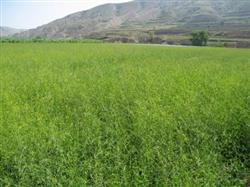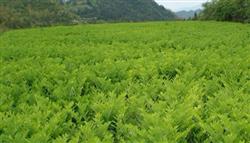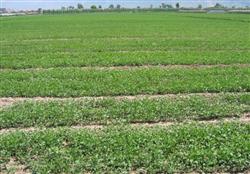How to plant Radix Astragali?

How to plant Radix Astragali? Astragalus membranaceus, also known as Mianqi, Mianqi, Beiqi, is a perennial herb of Leguminosae. It is divided into Northeast Astragalus membranaceus (Astragalus membranaceus) and Inner Mongolia Astragalus membranaceus (Astragalus membranaceus). Its root is used for medicine after drying, which has the effects of tonifying qi and solid surface, diuresis, suppuration, myogenesis, etc.; treatment of shortness of breath, collapse, palpitation, spontaneous sweating, edema of the body, chronic glomerulonephritis, dehydration, long-term diarrhea, uterine prolapse, sores for a long time. Astragalus membranaceus is a deep root plant, which should be planted in fertile, loose, well-drained sandy soil; cold and cool climate, strong drought resistance, cold tolerance, fear of heat and waterlogging, high temperature often inhibit growth; seed coat is hard, water absorption is poor, germination rate is low, seed germination does not like high temperature; avoid repeated cropping, should not be planted in heavy saline-alkali land, waterlogged land, clayey land. First, cultivation techniques: 1. Planting in fertile, loose, well-drained sandy soil. 2. Select stubble: it is not suitable for continuous cropping with potato, chrysanthemum and Atractylodes macrocephala, avoid rotation with legume crops and avoid continuous cropping. 3. Fertilization and soil preparation: select plots of high topography, deep soil layer, loose soil, good drainage, neutral or alkaline sandy loam or cotton sandy soil, ploughing and ploughing, applying more than 5000 kg of rotten fine fertilizer and 50 kg of cake fertilizer per mu, rake and level the soil, and the rainy and waterlogged land should be made into a high border. 4. Seed treatment: the seed coat has pectin layer, the seed coat is very hard, the water absorption is poor, and the emergence rate is low. The seeds must be treated before sowing. The main methods adopted are boiling water sprouting, sulfuric acid treatment, fine sand abrasion and so on. 5. Planting methods: direct seeding and seedling transplanting. (1) Direct seeding method: the new seeds produced in the previous year after artificial treatment are sown in spring after the land is thawed from the end of March to the beginning of April, or sown in winter before the land is frozen in November of the same year, and the seeds sown in winter do not carry out any treatment. In the whole field, according to the row spacing of 30 cm, plant spacing of 12 cm, sowing cover soil thickness of 2 cm, slightly suppressed, the amount of seed used per mu is 3 kg. (2) Seedling transplanting: the yield of direct seeding is low, the quality is poor, and it is difficult to protect seedlings, so the method of seedling transplanting should be adopted in production. In spring or summer, after the seed is pre-treated, it is evenly spread into the field according to the seed amount of 7 kg per mu, the thickness of the soil is 2 cm, a thin layer of fine sand is covered, water should be sprayed many times during drought, seedlings can be produced in 30 days, weeding between seedlings should be done twice at seedling stage, row and plant distance is 6 cm, pest control should be paid attention to, burying soil for thermal storage in the first and middle October of that year, or digging and transplanting seedlings to the field before sprouting in the spring of the following year. When transplanting, open the ditch by 20 cm, put the Qi seedlings obliquely and horizontally according to the distance of 10 cm, so that the upper part of the seedling stands upright, 3 Mel 4 cm from the ground, and the leveling surface is slightly suppressed. 6. Field management: (1) determination of seedlings: before direct seeding, when the height of seedlings is 3mur4cm, the seedlings should be filled by interplanting and transplanting, and when the height of seedlings is about 10 cm, the seedlings should be fixed according to the distance between plants. Combine the seedlings to weed and loosen the soil, especially in case of drought, it can be watered properly. (2) topdressing fertilizer: Astragalus is more fond of fertilizer. On the basis of sufficient basic fertilizer, Astragalus needs topdressing 2 Mu 3 times a year. After the first seedling is full or green, farm manure is applied per mu; after the second ploughing and weeding, the mu is manure; for the third time, 2000 kg of high quality farm manure is applied to the perennial astragalus after withered seedlings in winter, and the cake fertilizer is evenly mixed and then ditched and applied to cultivate the soil. (3) Irrigation and drainage: generally do not water the seedlings, keep the ground a little dry, squat seedlings properly to facilitate root strip elongation. When the weather is particularly dry, it can be watered properly. Timely attention should be paid to drainage in the rainy season to prevent rotting roots. (4) pest control: when grubs and other underground pests are found in the growing period, the plants are drip irrigated with 1000 times of solid trichlorfon, and the aphids can be sprayed with 1000 times of dimethoate EC to control seed wasps of Astragalus membranaceus in green fruit stage. The larvae of bean pod borer were sprayed with 50% malathion 1500ml 2000 times, powdery mildew could be sprayed with stone-sulfur mixture with Baume degree of 0.1 ml 0.3 degrees, or 500 times with 70-100g triadimefon per mu. 7. Select and retain improved varieties: when harvesting Astragalus membranaceus, the aboveground stem is short and thin, the underground part is fat and long, and the side is very few, and the root that does not blossom in that year is reserved for planting. The secondary root was cut off from the Reed head and planted in the border field where the basal fertilizer was applied. The row spacing was 40 cm, the plant spacing was 26 cm, the trenching depth was 20 cm, the seed root was placed vertically in the ditch, the bud head was facing up, and the top of the Reed head was compacted by 2ml / 3cm from the ground. Blossom and bear seeds from July to September, pick pods and fruits when the seeds turn brown, and pick them as they ripen. After drying, detach the seeds, remove impurities, put them in cloth bags or gunny bags, and store them in a ventilated and dry place. 8. Harvest processing: the management measures are correct. Astragalus membranaceus can be harvested in the same year when sowing in winter or transplanting in spring, and it can also be harvested in three years. In general, in early January, when the stems and leaves of the plant withered, cut off the aboveground parts of the stems and leaves, opened a ditch with a depth of 60 cents and 70 centimeters at one end of the border, then turned the soil with a long iron fork, plucked out the roots, removed the soil, cut off the Reed head, and dried them until they were dried. After that, the lateral roots and fibrous roots were cut off and bundled into small handfuls, then dried to the whole, and then sold on the market. Perennial fresh goods are exported for peeling processing. Just dry it in the sun. Click to get more planting techniques of Radix Astragali
- Prev

How to plant Astragalus membranaceus?
How to plant Astragalus membranaceus? Please give guidance to Astragalus membranaceus, also known as Mianqi, Mianqi, Beiqi, is a leguminous perennial herb. Red Astragalus is divided into Red Red Astragalus and White Red Astragalus (commonly known as High Vine Red Astragalus and low Red Astragalus), Red Red Astragalus vine high yield, White Red Astragalus vine low yield; Radix Astragali is divided into Northeast Radix Astragali (Astragalus membranaceus) and Inner.
- Next

How to manage the planting of Astragalus membranaceus?
How to manage the planting of Astragalus membranaceus? Please introduce the planting of Radix Astragali can refer to the following methods for management: 1, inter-seedling, fixed seedling, supplementary seedling: no matter it is direct seeding or seedling raising, after the seedling comes out, it is necessary to fix the seedling between rows. The seedlings should be early to avoid crowding and shading each other and competing for fertilizer and water. Astragalus membranaceus is generally mian 2 mi 3 times.
Related
- Fuxing push coffee new agricultural production and marketing class: lack of small-scale processing plants
- Jujube rice field leisure farm deep ploughing Yilan for five years to create a space for organic food and play
- Nongyu Farm-A trial of organic papaya for brave women with advanced technology
- Four points for attention in the prevention and control of diseases and insect pests of edible fungi
- How to add nutrient solution to Edible Fungi
- Is there any good way to control edible fungus mites?
- Open Inoculation Technology of Edible Fungi
- Is there any clever way to use fertilizer for edible fungus in winter?
- What agents are used to kill the pathogens of edible fungi in the mushroom shed?
- Rapid drying of Edible Fungi

